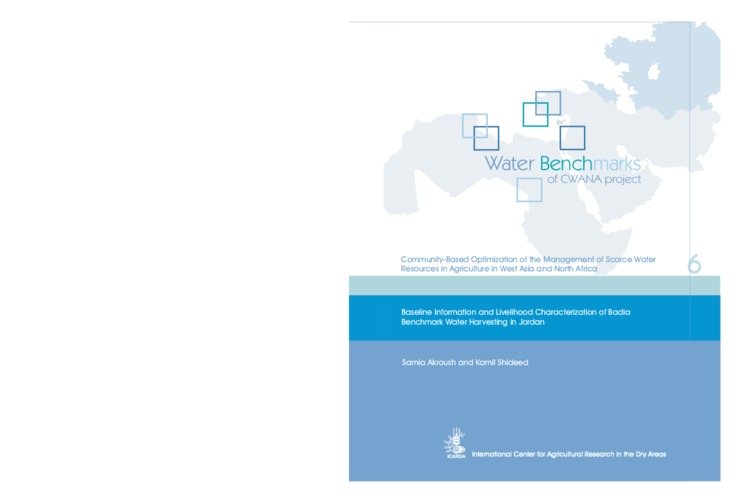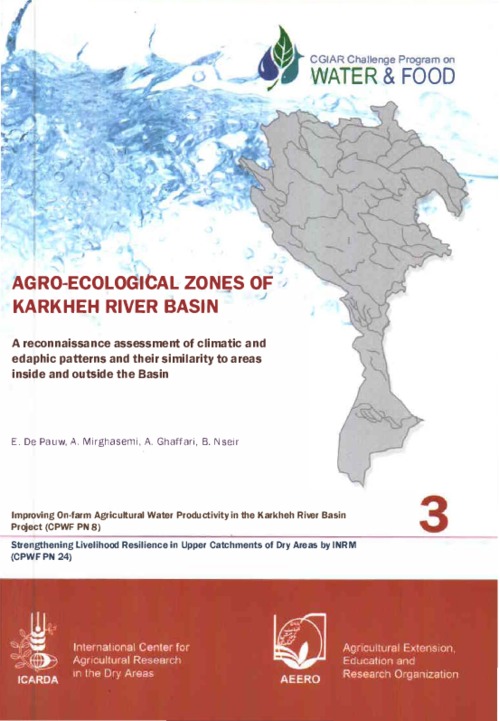Location
The International Center for Agricultural Research in the Dry Areas (ICARDA) was established in 1977. It is one of 15 such centers supported by the CGIAR. ICARDA’s founding mandate to promote agricultural development in the dry areas of developing countries remains highly relevant today.
ICARDA works with a tight focus on the problem-solving needs of resource-poor farmers, achieving this through the in-field delivery of its research outputs. Although global food production has increased by 20 per cent in the past decade, food insecurity and poverty remain widespread, while the natural resource base continues to decline.
International research centers such as ICARDA, which have helped drive previous improvements, continue to deliver new technologies to support sustainable growth in agriculture, and crucially, to work with a wide range of partners to accelerate the dissemination of these technologies.
ICARDA’s biggest strength is its staff – 600 highly skilled men and women from 32 countries. Our research and training activities cover crop improvement, water and land management, integrated crop-livestock-rangeland management, and climate change adaptation.
Other interventions include:
- Water harvesting - supplemental irrigation and water-saving irrigation techniques
- Conservation agriculture methods to reduce production costs and improve sustainability
- Diversification of production systems to high-value crops – horticulture, herbal and medicinal plants
- Integrated crop/rangeland/livestock production systems including non-traditional sources of livestock feed
- Empowerment of rural women – support and training for value-added products.
The ICARDA genebank holds over 135,000 accessions from over 110 countries: traditional varieties, improved germplasm, and a unique set of wild crop relatives. These include wheat, barley, oats and other cereals; food legumes such as faba bean, chickpea, lentil and field pea; forage crops, rangeland plants, and wild relatives of each of these species.
ICARDA’s research portfolio is part of a long-term strategic plan covering 2007 to 2016, focused on improving productivity, incomes and livelihoods among resource-poor households.
The strategy combines continuity with change – addressing current problems while expanding the focus to emerging challenges such as climate change and desertification.
We work closely with national agricultural research systems and government ministries. Over the years the Center has built a network of strong partnerships with national, regional and international institutions, universities, non-governmental organizations and ministries in the developing world and in industrialized countries with advanced research institutes.
THE ‘DRY AREAS’
Research and training activities cover the non-tropical dry areas globally, using West Asia, North Africa, Central Asia and the Caucasus as research platforms to develop, test, and scale-out new innovations and policy options.
Dry areas cover 41 per cent of the world’s land area and are home to one-third of the global population. About 16 per cent of this population lives in chronic poverty, particularly in marginal rainfed areas. The dry areas are challenged by rapid population growth, frequent droughts, high climatic variability, land degradation and desertification, and widespread poverty. The complex of relationships between these challenges has created a "Poverty Trap."
Members:
Resources
Displaying 401 - 405 of 431Proceedings of the International Workshop on: Improving Water Productivity and Livelihood Resilience in Karkheh River Basin in Iran
A two-day international workshop on “Improving Water Productivity and Livelihood Resilience in Karkheh River Basin” was jointly organized by ICARDA and AREO 10-11 September, 2007 in Karaj, Iran, and the presentations are compiled in the proceedings. The presentations at the workshop focused on integrated and participatory approach to technology development in addressing water productivity and livelihood resilience. It underscored the importance of sustainable development without endangering the ecological assets of fragile ecosystems in this region.
Baseline Information and Livelihood Characterization of Badia Benchmark Water Harvesting in Jordan
The project aims to improve the productivity of degraded rangelands through efficient utilization of limited rainfall. Nearly 48% of farmers in the Muhareb community own flocks, with an average flock size of about 159 head. About 52% of farmers in Um Al Naám own flocks, with an average of 125 head; about 63% of farmers in Muhareb community own a small flock (average 28 head), or a medium flock size (30%, average 293 head), or a large flock (7%, average 751 head. However, about 72% of farmers in Um Al Naám own a small flock, with an average flock size of 36 head.
Agro·ecological zones of Karkheh River Basin: A reconnaissance assessment of climatic and edaphic patterns and their similarity to areas inside and outside the Basin
CGIAR Challenge Program on Water and Food - Improving livelihood resilience by integrated natural resource management in upper catchments of dry areas (pn24) and improving on-farm agricultural water productivity in the Karkheh River Basin (pn8).
Towards integrated natural resources management (INRM) in dry areas subject to land degradation: the example of the Khanasser valley in Syria
Using the Khanasser Valley in Syria as an example, this paper looks at Integrated Natural Resource management (INRM) as an approach to tackle land degradation. The authors argue that INRM is a better approach because of its comprehensive nature and simplification of the inherently complex socio-ecological systems. One of the greatest challenges currently facing humankind is the alleviation of poverty while maintaining life support systems. Many people are dependent on natural resources that are often unsustainably used by poor people themselves or by other powerful stakeholders.







